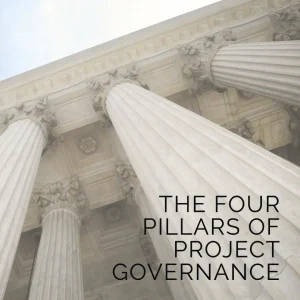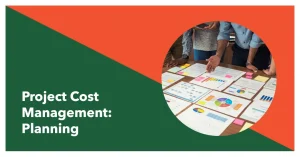To find out how Artificial Intelligence is changing the Project Management landscape, you may enjoy reading this article https://www.shaunstoltz.com/did-artificial-intelligence-just-change-everything-about-project-management/
I. Introduction
Hello, fellow project management enthusiasts! Today, we’ll be discussing a topic that is near and dear to my heart: effective scheduling. Whether you’re a seasoned project manager or just starting out in the field, mastering the art of scheduling can make a world of difference in the success of your projects. In this blog post, we’ll explore some tips and techniques that have helped me and countless others create and maintain efficient project schedules. So, buckle up and let’s dive in!
Scheduling is the backbone of project management. It’s the foundation on which everything else is built, from allocating resources to setting deadlines and, ultimately, delivering a successful project. When done well, effective scheduling can help you stay on track, prevent bottlenecks, and manage risks proactively. On the flip side, poor scheduling can lead to delays, cost overruns, and unhappy stakeholders.
Throughout this blog post, we’ll cover the essentials of project scheduling, from understanding the fundamentals to learning how to create and maintain a successful schedule. We’ll also discuss some common pitfalls to avoid and share real-world examples of effective scheduling in action. So, whether you’re a rookie or a pro, there’s something in here for everyone. Let’s get started on our journey toward mastering the art of effective scheduling!
II. Understanding the Fundamentals of Project Scheduling
Before we dive into the nitty-gritty of creating and maintaining a winning project schedule, let’s take a moment to cover some basic concepts. This way, we’ll be on the same page as we explore the art of effective scheduling together.
A. Definition of a Project Schedule
At its core, a project schedule is a roadmap that outlines the timeline and sequence of tasks required to complete a project. It’s a living, breathing document that helps project managers, team members, and stakeholders visualize the work that needs to be done, and when it should be completed. A good project schedule is clear, concise, and adaptable, allowing for adjustments as new information arises or circumstances change.
B. Elements of a Project Schedule
There are several key components that make up a project schedule, and understanding these will help you create a solid foundation for your own scheduling endeavors. Some of the most important elements include:
- Tasks: These are the individual activities that need to be completed in order to achieve the project’s objectives. Tasks should be specific, measurable, and assigned to a responsible team member.
- Task Durations: This is the estimated time it will take to complete each task, taking into account the resources available and any potential roadblocks.
- Dependencies: Dependencies are the relationships between tasks that dictate the order in which they must be completed. Understanding and accounting for these relationships is crucial for preventing bottlenecks and ensuring a smooth project flow.
- Milestones: These are significant events or achievements within the project that often mark the completion of a major task or phase. Milestones serve as checkpoints for progress and can help keep everyone on track.
- Deadlines: Deadlines are the dates by which certain tasks or milestones must be completed. They help to maintain a sense of urgency and ensure that the project stays on schedule.
C. Importance of Accurate Time Estimation
One of the most critical aspects of project scheduling is accurately estimating the time it will take to complete each task. Underestimating the time required can lead to unrealistic expectations, missed deadlines, and increased stress for everyone involved. On the other hand, overestimating the time needed can lead to inefficiencies and wasted resources. Striking the right balance is essential for creating a schedule that is both achievable and efficient.
Now that we’ve laid the groundwork, it’s time to dive into some tips and techniques for creating and maintaining an effective project schedule. Are you ready? Let’s do this!
III. Tips for Creating an Effective Project Schedule
With a solid understanding of the fundamentals under our belts, we’re now ready to explore some tried-and-true tips for crafting a project schedule that works for you and your team. Keep in mind that every project is unique, so feel free to adapt and modify these tips to fit your specific needs.
A. Clearly Define Project Goals and Objectives
Before you can even begin to create a schedule, you need a clear understanding of your project’s goals and objectives. This will help you stay focused on what truly matters and ensure that your schedule is aligned with the desired outcomes. Don’t be afraid to ask questions, seek clarification, or request additional information from stakeholders if necessary. It’s better to have a crystal-clear vision at the outset than to encounter misunderstandings down the line.
B. Break Down the Project into Smaller Tasks
Once you have a clear understanding of your project’s goals and objectives, the next step is to break down the work into smaller, more manageable tasks. This process, known as Work Breakdown Structure (WBS), helps you identify all the activities required to complete the project and assign responsibility to team members. Be specific and detailed in your task descriptions, and try to ensure that each task is achievable within a reasonable time frame.
C. Estimate Task Durations and Allocate Resources
After breaking down your project into tasks, you’ll need to estimate the time it will take to complete each one. This is where your understanding of accurate time estimation comes into play. Use historical data, expert opinions, or even your own experience to make educated guesses about task durations. Remember to account for potential obstacles and resource limitations. Once you’ve estimated the time required for each task, allocate the necessary resources – including personnel, equipment, and materials – to ensure that the work can be completed efficiently.
D. Identify Dependencies Between Tasks
As you create your list of tasks, be on the lookout for dependencies – those relationships between tasks that dictate the order in which they must be completed. Ignoring these dependencies can result in bottlenecks or delays that throw your entire schedule off course. Be proactive in identifying and documenting dependencies so that you can plan your schedule accordingly and avoid unpleasant surprises.
E. Use a Project Scheduling Tool or Software
While it’s possible to create a project schedule using pen and paper or a simple spreadsheet, investing in a dedicated project scheduling tool or software can make your life much easier. These tools are designed to help you manage and visualize your schedule, track progress, and make adjustments as needed. Plus, many of them include features like automatic notifications, collaboration capabilities, and even resource leveling to help you get the most out of your schedule.
By applying these tips, you’ll be well on your way to creating an effective project schedule that keeps your team on track and your stakeholders happy. But remember, creating the schedule is just the beginning – maintaining and updating it throughout the project is just as important. In the next section, we’ll discuss some techniques for doing just that. Stay tuned!
IV. Techniques for Maintaining and Updating the Project Schedule
Congratulations on creating your project schedule! Now comes the equally important task of maintaining and updating it as your project progresses. In this section, we’ll explore some techniques to help you stay on top of your schedule and ensure that it remains a valuable tool throughout the life of your project.
A. Regular Progress Monitoring
One of the keys to successful project scheduling is regularly monitoring the progress of your tasks. This allows you to identify potential issues early on and make adjustments before they become major problems. Establish a routine for checking in with your team members, reviewing task status, and updating the schedule as needed. Be proactive in addressing any discrepancies or delays, and always keep an open line of communication with your team.
B. Managing Changes and Risks Proactively
In the world of project management, change is inevitable. Whether it’s a shift in project scope, a sudden resource constraint, or an unexpected risk, being prepared to adapt your schedule to accommodate these changes is crucial. Develop a change management process that allows you to evaluate the impact of changes on your schedule and make informed decisions about how to proceed. Similarly, maintain a risk register to track potential risks and their associated mitigation strategies, and be prepared to update your schedule accordingly.
C. Adjusting the Schedule as Needed
As your project progresses, you may find that your initial estimates were too optimistic or that certain tasks are taking longer than expected. It’s essential to be flexible and willing to adjust your schedule as needed. This might involve extending deadlines, reallocating resources, or even reordering tasks to maintain efficiency. Remember, a project schedule is meant to be a living document that adapts to the realities of your project, not a rigid set of rules that must be followed at all costs.
D. Communicating Schedule Updates to Stakeholders
Maintaining an up-to-date project schedule is only useful if everyone involved in the project is aware of the current status and any changes that have been made. Make a point of regularly communicating schedule updates to your team members and stakeholders, and ensure that they have access to the most recent version of the schedule. Transparency and clear communication will help keep everyone on the same page and minimize confusion or misunderstandings.
By employing these techniques, you’ll be well-equipped to maintain and update your project schedule as needed, ensuring that it remains an invaluable tool throughout your project’s lifecycle. In the next sections, we’ll look at some real-world examples of effective scheduling in practice and explore common pitfalls to avoid. Keep reading to continue honing your scheduling skills!
V. Real-World Examples of Effective Scheduling in Practice
Now that we’ve discussed the tips and techniques for creating and maintaining an effective project schedule, it’s time to see how these principles work in the real world. In this section, we’ll explore two case studies that demonstrate the power of effective scheduling in action. As you read through these examples, try to think about how the lessons learned can be applied to your own projects.
A. Case Study 1: Successful Project with a Well-Maintained Schedule
Imagine a software development company tasked with creating a new mobile app for a client. The project manager, Jane, began by clearly defining the project goals and objectives, ensuring that both the client and her team had a shared vision of the desired outcome. She then broke down the project into smaller tasks, estimated their durations, and identified dependencies.
Using a project scheduling tool, Jane created a detailed schedule that allowed her team to visualize their progress and stay on track. Throughout the project, she monitored their progress closely and communicated regularly with both her team and the client, making adjustments to the schedule as needed.
By diligently maintaining the project schedule and proactively addressing any changes or risks, Jane and her team were able to deliver the mobile app on time and within budget. The client was thrilled with the results, and Jane’s company secured a long-term partnership for future projects.
B. Case Study 2: Project Recovery Due to Proactive Schedule Adjustments
Now let’s consider a different scenario. A construction company was hired to build a new office building, but midway through the project, they encountered a series of unexpected challenges, including material shortages and severe weather delays.
The project manager, Mike, recognized the need to adjust the schedule in order to get the project back on track. He convened a meeting with his team and key stakeholders to discuss the challenges and brainstorm potential solutions. Together, they identified ways to reallocate resources, revise task durations, and even modify the construction sequence to minimize further delays.
Thanks to Mike’s proactive approach to schedule management and his willingness to adapt to changing circumstances, the construction project was ultimately completed only slightly behind schedule and with minimal impact on the budget. The client appreciated the company’s transparency and commitment to overcoming obstacles, and they were pleased with the final result.
These case studies highlight the importance of effective scheduling and its role in successful project management. By applying the tips and techniques we’ve discussed in this blog post, you’ll be well on your way to mastering the art of scheduling and ensuring the success of your own projects. But before we wrap up, let’s take a moment to review some common pitfalls to avoid when creating and maintaining your project schedule. Stay with me – we’re almost there!
VI. Common Pitfalls to Avoid in Project Scheduling
As we near the end of our journey through the art of effective scheduling, it’s essential to take a moment to reflect on some common pitfalls that can trip up even the most experienced project managers. By being aware of these potential challenges, you’ll be better equipped to steer clear of them and keep your projects on the path to success.
A. Over-optimistic Time Estimates
One of the most common mistakes in project scheduling is underestimating the time it will take to complete tasks. This over-optimism can lead to unrealistic expectations, missed deadlines, and a whole lot of stress for everyone involved. To avoid this pitfall, always base your time estimates on historical data, expert opinions, or your own experience, and be sure to account for potential obstacles and delays. Remember, it’s better to be conservative in your estimates and pleasantly surprised when things go smoothly than to be caught off guard by unexpected setbacks.
B. Ignoring Task Dependencies
As we’ve discussed earlier in this blog post, understanding and accounting for task dependencies is crucial for creating an effective project schedule. Ignoring these relationships can result in bottlenecks, delays, and other issues that throw your entire project off course. Always take the time to identify and document dependencies between tasks, and adjust your schedule accordingly to ensure a smooth project flow.
C. Insufficient Risk Management
Projects rarely go exactly as planned, and unexpected risks can have a significant impact on your schedule if not managed effectively. To minimize the potential for schedule disruptions, be proactive in identifying potential risks and developing strategies to mitigate them. Maintain a risk register, involve your team in the risk management process, and be prepared to adjust your schedule as needed to accommodate unforeseen challenges.
By being aware of these common pitfalls and taking steps to avoid them, you’ll be well on your way to mastering the art of effective scheduling and ensuring the success of your projects. As we wrap up this blog post, let’s take a moment to recap what we’ve learned and offer some final words of encouragement.
VII. Conclusion and Final Thoughts
We’ve come a long way together on this journey through the art of effective scheduling. From understanding the fundamentals of project scheduling to exploring tips, techniques, and real-world examples, we’ve covered a lot of ground. As we conclude, let’s recap some of the key takeaways:
- A project schedule is a roadmap that outlines the timeline and sequence of tasks required to complete a project. It’s a living document that helps project managers, team members, and stakeholders visualize the work that needs to be done and when it should be completed.
- Successful scheduling involves breaking down the project into smaller tasks, estimating their durations, identifying dependencies, and allocating resources.
- Regularly monitoring progress, managing changes and risks proactively, and adjusting the schedule as needed are essential for maintaining an effective project schedule.
- Effective scheduling is critical for delivering projects on time and within budget, and can lead to increased client satisfaction and long-term partnerships.
- Be aware of common pitfalls such as over-optimistic time estimates, ignoring task dependencies, and insufficient risk management, and take steps to avoid them.
As you apply these lessons to your own projects, remember that effective scheduling is both an art and a science. It requires a balance of technical knowledge, experience, and flexibility to adapt to changing circumstances. Be patient with yourself, and don’t be afraid to ask for help or seek out additional resources to further hone your skills.
I hope that this blog post has been helpful, inspiring, and informative as you embark on your own journey toward mastering the art of effective scheduling. Keep learning, stay curious, and remember that every project presents a new opportunity to grow and refine your scheduling expertise. Best of luck in your future projects, and happy scheduling!
Find out more about Shaun Stoltz https://www.shaunstoltz.com/about/
This post was written by an AI and reviewed/edited by a human.



